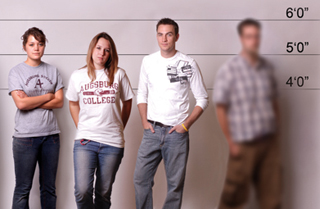News Archives - 2008
Identifying the bad guys -- research in police lineups
 If you’re guilty, Nancy Steblay wants you to get noticed. Last year the Augsburg psychology professor she was awarded a grant from the U.S. Department of Justice to conduct research in eyewitness accuracy.
If you’re guilty, Nancy Steblay wants you to get noticed. Last year the Augsburg psychology professor she was awarded a grant from the U.S. Department of Justice to conduct research in eyewitness accuracy.
Steblay says her research reflects an interest she’s had in eyewitness accuracy for many years. "Lineups are most interesting to me because they involve procedures that the criminal justice system cannot adjust in order to reduce the likelihood of false evidence," said Steblay. "My interest in lineups really strengthened as DNA post-conviction exonerations began to show up in the mid-90s. The most common cause of wrongful conviction in these cases is eyewitness error."
Steblay’s research consists of three components. First, she completed a review of laboratory lineup research, which included 70 studies and involved combining data from all the tests into comprehensive statistical analysis. In this phase she analyzed data from 22 different labs around the world.
The second phase is a collaboration with the Tucson, Arizona police department, comparing eyewitness performance in lineup identifications under various types of lineup strategies to determine the best strategy. This summer she will begin training for the detectives who will use the procedures, and she will have access to 2,000 of their actual lineups for her analysis.
The third component of research involves three laboratory studies at Augsburg, where Steblay works with students to investigate various ways in which to improve lineup identification accuracy.
Steblay has completed research on a number of topics in eyewitness accuracy including forensic hypnosis, eyewitness forensic memory fallibility, and areas of forensic psychology. She hopes her current integrated lab and field research will translate and that she finds "a way to reduce the risk of false identification of innocent suspects while increasing the likelihood that the guilty will be identified."